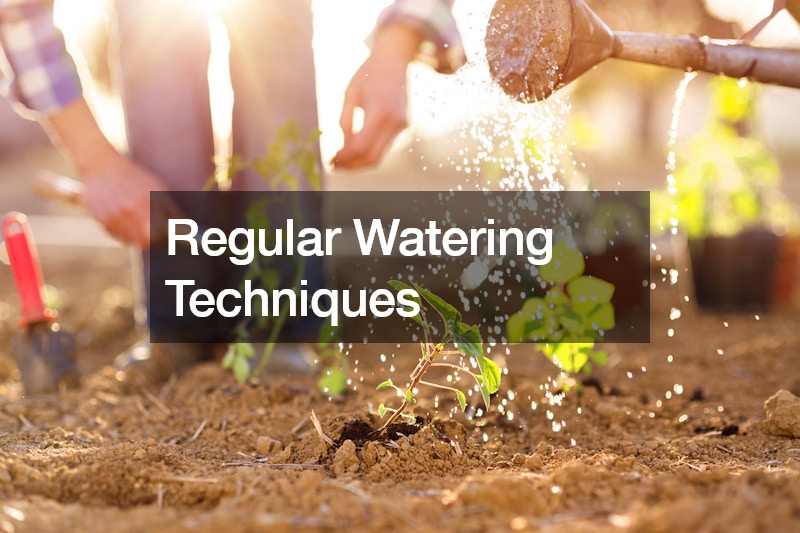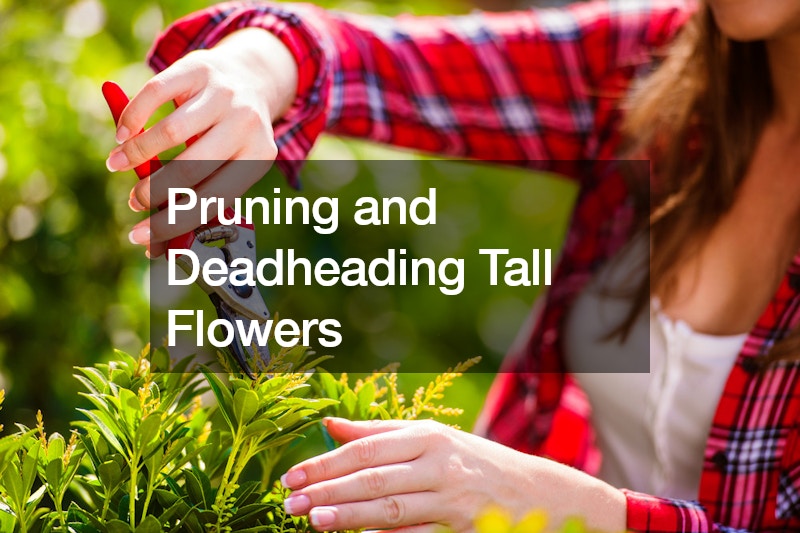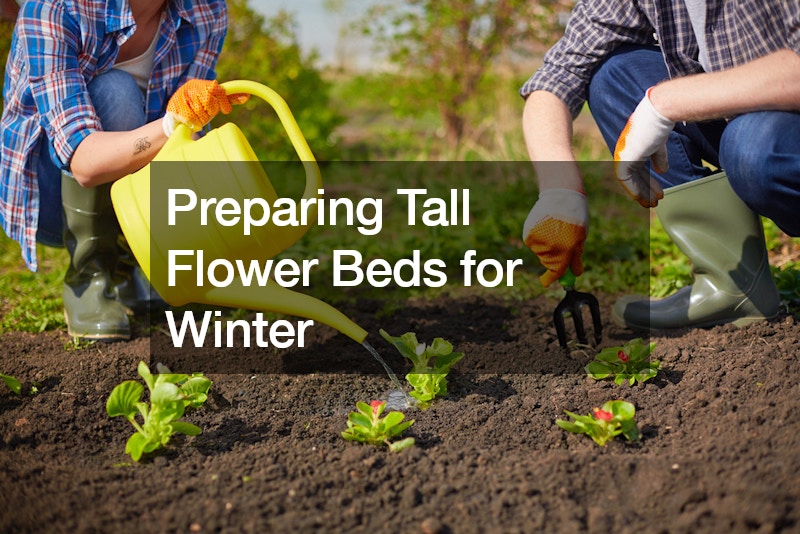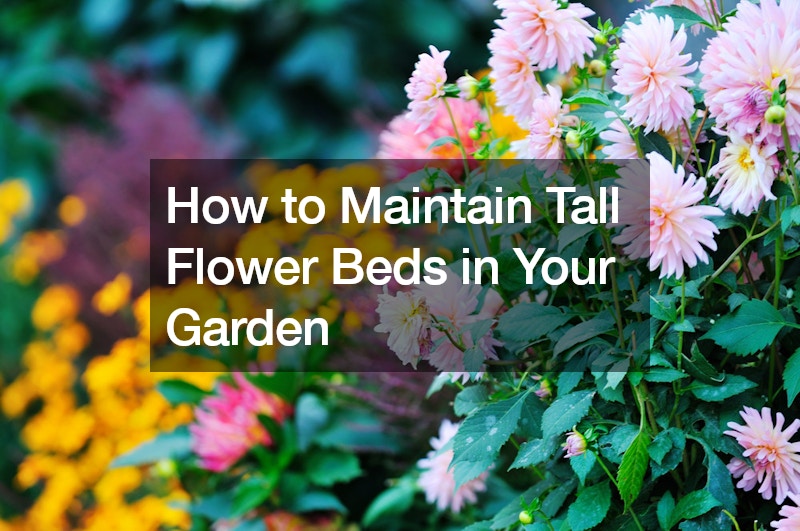Tall flower beds can add a dramatic and visually striking element to any garden or yard. These elevated beds often create a focal point that draws in the eye and can be filled with a variety of plants to enhance your landscape design. Whether you’re a seasoned gardener or a beginner, understanding the best practices for selecting, planting, and maintaining flower beds is crucial. This comprehensive guide will cover everything from choosing the right plants and preparing the soil to watering, fertilizing, and pruning your tall flowers. By following these tips and techniques, you can create and maintain beautiful flower beds that thrive throughout the growing season.
Choose the Right Plants for Tall Flower Beds

Selecting the right plants for your flower beds is the first and possibly most essential step in creating a successful and beautiful garden. A trip to your local garden center can provide you with a wealth of options and expert advice on plants suited for flower beds. Consider choosing plants that are naturally tall and sturdy, such as sunflowers, delphiniums, and hollyhocks, which can provide the height and structure needed for a dramatic effect.
When visiting a local garden center, take note of the plants that perform well in your specific climate and soil conditions. It’s essential to select varieties that will thrive in your area to ensure a successful and vibrant garden season. Don’t be afraid to ask the staff for recommendations based on your vision for your flower beds, including factors like bloom time, color, and growth habits.
In addition to your local garden center, consider sourcing plants from reputable online retailers or local plant sales. Look for perennial varieties that will return year after year, providing a long-term and cost-effective solution for your tall flower beds. Consider incorporating a mix of perennials and annuals for diverse blooms and extended interest throughout the growing season. By choosing the right plants and thoughtful placement, you can create a visually appealing, resilient, and lasting garden feature that enhances your outdoor space.
Soil Preparation and Improvement
Proper soil preparation is critical for the success of your flower beds. Consulting a local landscape designer can provide valuable insights into the best techniques for improving your garden soil. They can assess the current state of your soil and recommend amendments or treatments to create an optimal growing environment for your plants.
Begin by removing any weeds, rocks, or debris from the flower bed area to clear the space for planting. Loosen the soil to a depth of at least 12 inches, allowing plant roots to penetrate easily and access essential nutrients. Adding organic matter, such as compost or well-rotted manure, can significantly improve soil fertility, structure, and water retention.
A local landscape designer can also suggest specific soil additives based on the plants you have chosen for your flower beds. These might include balanced fertilizers, soil conditioners, or pH adjusters tailored to the needs of your selected plant varieties. Testing soil pH and adjusting it as needed ensures that your plants will have the best possible start.
Proper Plant Spacing for Tall Flower Beds
Proper spacing is essential to prevent overcrowding in flower beds. Adequate space allows each plant to receive the necessary sunlight, water, and nutrients. A well-thought-out landscape design will consider the mature size of each plant and ensure they have enough room to grow and thrive.
When planning your flower beds, consider the recommended spacing for each plant species. This information can usually be found on plant labels or obtained from the local garden center. By following these guidelines, you can avoid competition for resources and promote healthy growth.
Incorporating a mix of plant heights and bloom times can also enhance the visual appeal of your flower beds. Taller plants can be placed in the center or back of the bed, while shorter varieties can fill in the front. This approach creates a layered effect and maximizes the use of space.
Regular Watering Techniques

Consistent and appropriate watering is crucial for the health of your tall flower beds. Working with a hardscaping contractor to install an irrigation system can simplify this task and ensure your plants receive the right amount of water. An automated system can be programmed to provide regular watering, even while you’re away, adjusting schedules for seasonal changes and varying weather conditions.
If you prefer to water manually, it’s important to establish a routine that considers the specific needs of your plants. Most tall flowers benefit from deep, infrequent watering that encourages deep root growth, which is vital for long-term health. Avoid shallow, frequent watering, which can lead to weak root systems and increased susceptibility to drought or disease.
A hardscaping contractor can also help design a rainwater harvesting system that conserves water and provides a sustainable source for your garden. This system can capture and store rainwater for use in your flower beds, reducing your water bill and environmental footprint. Efficient watering techniques, whether through automated systems or manual methods, not only promote healthy plants but also contribute to environmentally responsible gardening practices.
Fertilizing Tall Flowers for Optimal Growth
Applying the right fertilizers can significantly enhance the growth and flowering of your tall plants. Consulting lawn service contractors can provide guidance on the best types of fertilizers for your specific plant varieties. They can recommend a balanced fertilizer that supplies essential nutrients such as nitrogen, phosphorus, and potassium.
Regular fertilization is important, but it’s equally crucial not to over-fertilize, as this can harm your plants. Follow the manufacturer’s instructions for application rates and timing. Lawn service contractors can also suggest slow-release fertilizers that provide a steady supply of nutrients over time.
In addition to synthetic fertilizers, consider using organic options such as compost tea or fish emulsion. These natural fertilizers can improve soil health and provide a gentle nutrient boost to your tall flower beds. Combining organic and synthetic fertilizers can create a balanced and effective fertilization plan.
Supporting Tall Flowers for Stability
Tall flowers often require additional support to remain upright and stable, especially in windy conditions. A landscape paver installation can provide a sturdy foundation for support structures such as stakes, cages, or trellises. These supports can help prevent plants from toppling over and becoming damaged, preserving the beauty of your flower beds.
When installing support structures, ensure they are placed early in the growing season before plants reach their full height. This allows the plants to grow around and through the supports naturally, offering consistent support throughout their development. Landscape paver installation ensures a durable and visually pleasing base for these structures while adding a decorative element to your garden.
Choosing the right type of support depends on the plant species and their growth habits. For example, tall, single-stemmed flowers may benefit from individual stakes, while bushier plants might require cages or trellises. Additionally, adding ties or clips to secure the plants to the supports can enhance stability and prevent damage from strong winds or heavy rains. Proper support not only aids in plant health but also contributes to the overall design and aesthetics of your tall flower beds.
Pruning and Deadheading Tall Flowers

Regular pruning and deadheading are essential for maintaining the health and beauty of your tall flower beds. Consulting with a landscape lighting expert can help ensure you have adequate visibility to perform these tasks, even during early morning or evening hours. Proper lighting can make pruning safer and more efficient, enabling you to manage your garden effectively regardless of the time of day.
Pruning involves removing dead or damaged stems and leaves to encourage new growth and prevent disease. Focus on cutting back any overgrown areas to promote better air circulation and sunlight penetration, which helps plants stay healthy and vibrant. Use clean, sharp tools to make precise cuts and reduce the risk of disease spread.
Deadheading, or removing spent blooms, encourages continuous flowering throughout the season. This process redirects the plant’s energy from seed production to new flower development, ensuring your garden remains colorful and attractive. Regularly deadheading your tall flowers can result in a more vibrant and prolonged display of blooms, extending the beauty of your garden.
Managing Pests and Diseases
Effective pest and disease management is crucial for the health and longevity of your flower beds. Consulting with a local tree removal service can provide insights into common garden pests and the best methods for controlling them. They can identify potential threats and recommend appropriate treatments, such as chemical or natural remedies, to protect your plants.
Regular monitoring and early detection are key to managing pests and diseases. Inspect your plants frequently for signs of damage, discoloration, or unusual growth patterns. Addressing issues promptly can prevent them from spreading and causing more significant harm, saving you time and resources in the long run.
Using organic pest control methods, such as introducing beneficial insects, applying neem oil, or using insecticidal soap, can be effective and environmentally friendly. A local tree removal service can also advise on proper sanitation practices, such as removing infected plant material and cleaning gardening tools, to minimize the risk of disease in your flower beds.
Additionally, maintaining good plant health through proper watering, fertilization, and soil care strengthens your plants’ natural defenses against pests and diseases. By integrating these strategies, you can keep your garden vibrant and resilient throughout the growing season.
Mulching for Moisture Retention and Weed Control
Mulching is an essential practice for maintaining healthy, tall flower beds. Working with a mulch service can ensure you select the right type and amount of mulch for your garden. Mulch helps retain moisture, suppress weeds, and regulate soil temperature, all of which contribute to plant health.
Applying a two to three inch layer of mulch around your plants can significantly reduce the need for frequent watering. It also prevents weed growth by blocking sunlight from reaching the soil surface. A mulch service can provide high-quality, organic mulch that enriches the soil as it breaks down.
Ensure the mulch is spread evenly and not piled against the stems of your plants, as this can lead to rot and other issues. Regularly replenish the mulch layer to maintain its effectiveness throughout the growing season. Proper mulching practices can enhance the overall health and appearance of your flower beds.
Preparing Tall Flower Beds for Winter

As the growing season comes to an end, it’s important to prepare your tall flower beds for winter. Consulting with a tree trimming service can provide valuable advice on how to protect your plants during the colder months. They can recommend techniques such as pruning and wrapping plants to prevent winter damage, ensuring your garden survives the winter weather.
Begin by cutting back any dead or diseased plant material and removing it from the garden. This helps prevent the spread of disease and prepares the plants for new growth in the spring. Tree trimming services can assist with pruning larger plants to reduce the risk of breakage from snow and ice, which can cause long-term damage.
Adding a thick layer of mulch can insulate the soil and protect plant roots from freezing temperatures. In addition, consider covering your flower beds with burlap or frost cloth to shield them from harsh winter winds. Proper winter preparation can also include applying a layer of compost to nourish the soil, ensuring that your flower beds emerge healthy and vibrant in the spring.
Additionally, removing any fallen leaves or debris from the beds can help prevent pests and diseases from overwintering in the garden. By taking these steps, you can safeguard your plants and set the stage for a beautiful and successful growing season next year.
Creating and maintaining flower beds requires careful planning, regular care, and a bit of expert advice. By choosing the right plants, preparing the soil, and installing proper supports, you can create a stunning garden feature that enhances your landscape design. Regular watering, fertilizing, and pruning are essential to keep your tall flowers healthy and blooming throughout the season. Managing pests and diseases, mulching, and preparing for winter are also crucial steps in ensuring the longevity and beauty of your tall flower beds. By following the tips and techniques outlined in this guide, you can enjoy a vibrant and visually appealing garden that will be the envy of your neighbors. Happy gardening!

